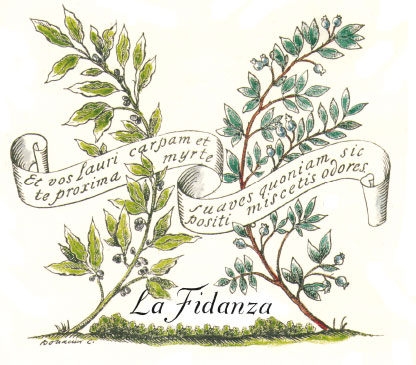From 1200 to 1350, from Free Commune to satellite of Florence: for 150 years San Gimignano was a star shining in an uncluttered sky. In those times exchanges were possible throughout the known world; in the Christian sphere pilgrims, monks, nobles, kings, emperors, and merchants journeyed beyond the Via Romea and Saint Peter’s See, to the Holy Land, to discover the riches of the new civilization of Islam, and further on, through Buddhist monasteries and Hindu temples, to discover Confucian discipline and the Taoist culture of Beijing, where the Gran Khan of the Mongol Empire welcomed all visitors and not only Marco Polo.
In this unique season of contact and communication, San Gimignano was a required stop. The Hospice of Santa Fina, the Collegiata: the Cathedral of the town, the towers of the rich merchants who owned warehouses in Asia Minor and attended all the great trade fairs that began to open in Northern Europe. The palaces blossomed with architectural motifs drawn from the most diverse styles, and the Knights Templars of the Holy Order of Jerusalem carved their Cross on the façades of the churches. The frescos tell the tales of the Old and New Testaments, filling them with the hurly-burly of the times. At Assisi, miraculously, St. Francis brought the flower of poetry to bloom and with it a sense of humanity before his days unknown. The rigid mysticism that had prevailed in the Middle Ages softened and succumbed to the blandishments of terrestrial beauties. The Absolute embraced the delights of everyday life, as can be seen in the works of the painters of Siena and San Gimignano, who served as a witnesses of their times. It was a moment of great brilliance, of equilibrium between the known and the unknown with a perfection that San Gimignano lived to the fullest.
With the closure of the Silk Route and the fanaticism of the Ottomans barriers arose: Christopher Columbus’s attempt to evade them failed, and with his failure so did the dream of uniting the two Old Worlds. In Europe, the Ora et Labora of the Benedictine centers, which defined the course of the day, imposed upon the Western world rhythms and patterns diametrically opposed to those of the East. Saint Dominic and his Holy Brethren helped the Church shape itself into the only owners of the truth. Man, by now master of the Earth, became the Hero of the Renaissance, capable of entrapping the Spirit in the prison of Form, and our European epoch began, with San Gimignano slumbering in the shadow of Florence and Siena, too refined to accept new paths, turned in, taking refuge in memory and in an elegant, aristocratic reserve.
